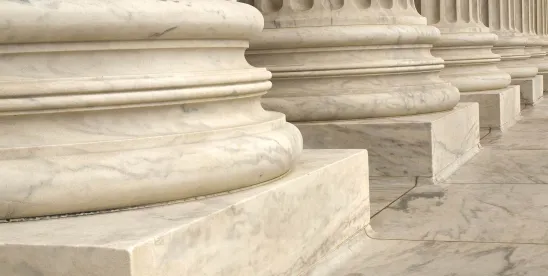The United States Supreme Court has effectively vanquished the Chevron doctrine, which has governed the power of federal agencies to interpret federal statures for the last 40 years. In recent years, the Chevron doctrine has been under siege, with the Court signaling both a reluctance to apply the doctrine and a move away from deferring to federal agencies generally. Some circuit courts of appeal have commented that Chevron has become "the Lord Voldemort of administrative law, the case-which-must-not-be-named."
In its June 28, 2024, decision in Loper Bright Enterprises, Inc. v. Raimondo,[1] the Court reset the Chevron landscape. Chevron established that a federal court must defer to a federal agency's interpretation of applicable federal statutes so long as the interpretation was reasonable—a low bar.[2] In Loper Bright, the National Marine Fisheries Service (NMFS) enacted a rule that required fishing companies to absorb the cost for on-board fishing monitors and interpreted the Magnuson Stevens Act (MSA) as permitting it the authority to charge companies for that cost, rather than the NMFS absorbing the cost. The Court of Appeals for the D.C. Circuit held that, because the MSA is silent on whether the NMFS or the fishing companies pay the cost, the NMFS interpretation that the fishing companies must absorb the cost is reasonable. Relying on Chevron, the Court of Appeals held that it therefore had to defer to the NMFS interpretation and upheld the rule.
The Supreme Court disagreed. In a 6-2 decision,[3] the Court vacated and remanded the Court of Appeals' judgment in Loper Bright, and in so doing, overruled Chevron. Writing for the majority, Chief Justice John Roberts wrote that "[t]he deference that Chevron requires of courts reviewing agency action cannot be squared with the APA [Administrative Procedures Act]." Slip op. at 18. In particular, he opined, "Chevron defies the command of the APA that 'the reviewing court'—not the agency whose action it reviews—is to decide all relevant questions of law' and 'interpret statutory provisions[,]'" id. at 21 (citing §706 of the APA) (emphasis original) and that "Chevron's presumption is misguided because agencies have no special competence in resolving statutory ambiguities. Courts do." Id. at 23. He concluded "courts need not and under the APA may not defer to an agency interpretation of the law simply because a statute is ambiguous." Id. at 35. However, Chief Justice Roberts conceded that although Chevron would be abandoned, the Court does "not call into question prior cases that relied on the Chevron framework. The holdings of those cases that specific agency actions are lawful—including the Clean Air Act holding of Chevron itself—are still subject to statutory stare decisis despite our change in interpretive methodology." Id. at 34.
In dissent, Justice Elena Kagan wrote that the ruling is "yet another example of the Court's resolve to roll back agency authority, despite congressional direction to the contrary." Id. at 32 (Kagan, J., dissenting). Measuring the impact of overruling Chevron, she noted "[Chevron] has become part of the warp and woof of modern government, supporting regulatory efforts of all kinds—to name a few, keeping air and water clean, food and drugs safe, and financial markets honest." Id. at 2. She finally lamented that "a rule of judicial humility gives way to a rule of judicial hubris. In recent years, this Court has too often taken for itself decision-making authority Congress assigned to agencies." Id. at 3.
By reversing 40 years of case law, the decision will have a broad ripple effect through the federal regulatory world. Companies that have relied on a federal agency's interpretation of applicable federal statutes should reassess their reliance, and companies that are constrained by such interpretations may have a new basis to challenge them. Federal regulations designed to fill out the contours of ambiguous statutes are particularly at risk. For example, challenges to parts of the Inflation Reduction Act could face increased vigor, such as guidance and rules set by the Treasury Department to codify who is eligible for certain tax credits and other clean energy funding. Other highly regulated industries such as labor and employment, intellectual property, banking, health care, and energy will likely see similar challenges.
[1] Loper Bright Enterprises, Inc. v. Raimondo, No. 22-451, slip op. at 1 (Sup. Ct. June 28, 2024).
[2] Chevron v. Natural Resources Defense Council, 467 U.S. 837 (1984)
[3] Justice Jackson was recused from Loper Bright and therefore did not participate in the consideration or decision of the case.








 />i
/>i

